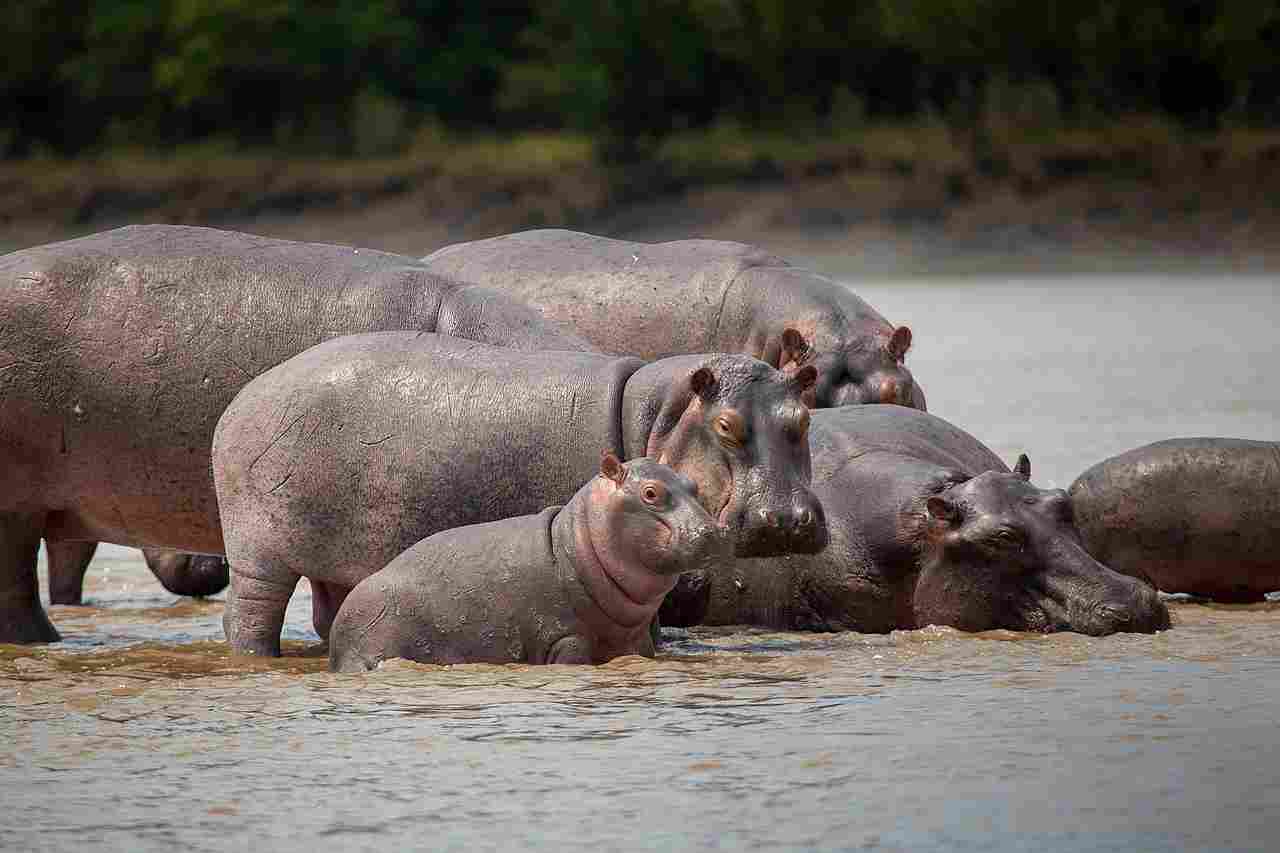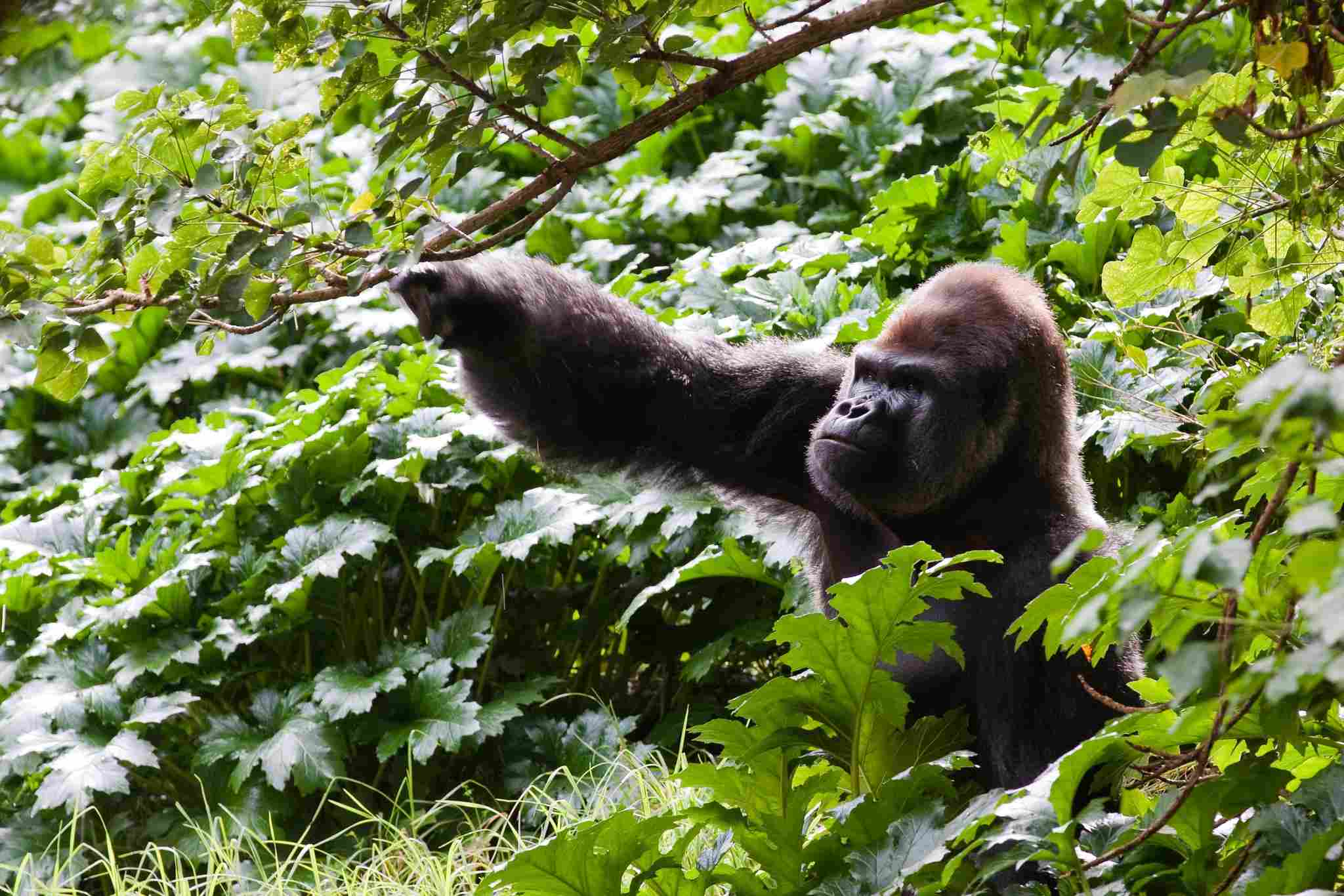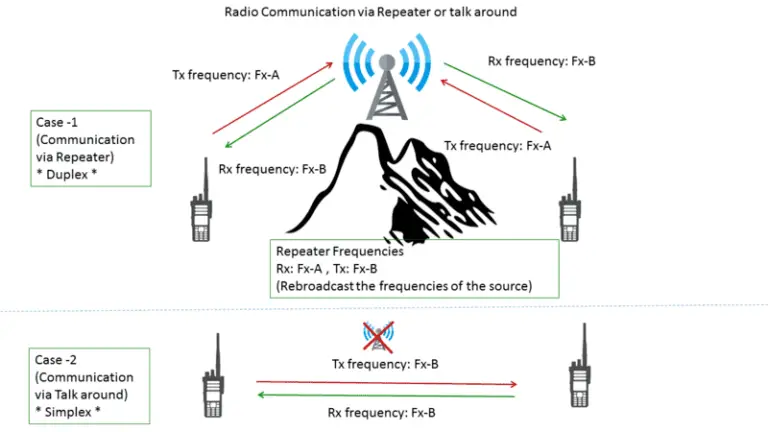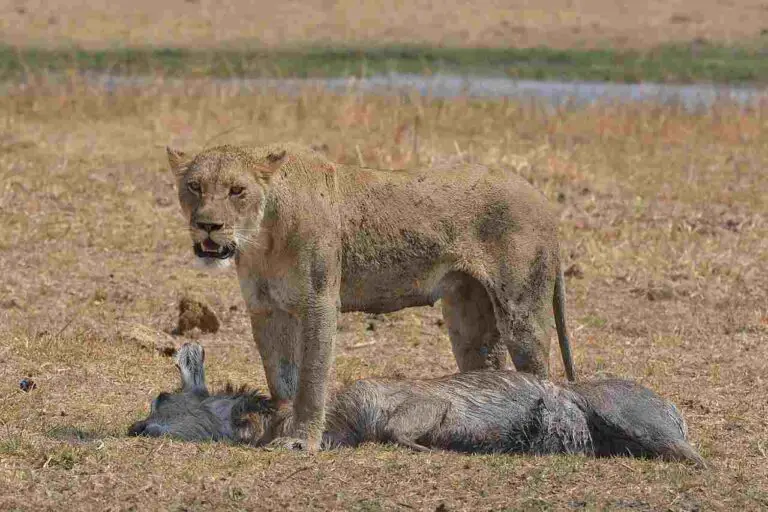Hippo Vs Gorilla Size, Weight, Ecological Comparison
Hippos are much stronger than gorillas on average, because they are much larger and heavier.
Various factors can be used to compare these animals, as shown in this article.
Key Outcomes
*Biological Comparison
When it comes to the biological comparison between hippos and gorillas, it is important to note that these two animals are not biologically related. Hippos belong to the genus Hippopotamus, with the common hippopotamus (Hippopotamus amphibius) being the most well-known species. On the other hand, gorillas belong to the genus Gorilla, with two recognized species: the eastern gorilla (Gorilla beringei) and the western gorilla (Gorilla gorilla).
Despite not being closely related, a comparison of their biological characteristics reveals interesting differences. Hippos are large semi-aquatic mammals known for their barrel-shaped bodies and massive heads. Gorillas, on the other hand, are the largest primates and have a robust build with broad chests and strong arms.
*Size and Weight Comparison
Hippos and gorillas are both impressive in terms of their size and weight. When comparing their sizes, it is clear that gorillas are larger than hippos. Adult male gorillas can reach heights of up to 5.6 feet (1.7 meters) when standing upright, while female gorillas are slightly smaller. On the other hand, hippos can grow to be around 13 feet (4 meters) long and stand about 5 feet (1.5 meters) tall at the shoulder.
In terms of weight, hippos are significantly heavier than gorillas. Adult male hippos can weigh up to 3,300 pounds (1,500 kilograms), while females typically weigh around 2,900 pounds (1,300 kilograms). In comparison, male gorillas weigh between 300 to 485 pounds (135 to 220 kilograms), while females weigh around 200 to 300 pounds (90 to 135 kilograms).
*Physical Capability Comparison
Hippos are generally stronger than gorillas, owing to their superior size and weight. However, both hippos and gorillas have unique physical attributes that make them formidable in their own ways.
Hippos possess immense jaw strength, allowing them to crush bones and tear through vegetation. On the other hand, gorillas have incredible upper body strength, enabling them to climb trees and wield their powerful arms.
1). Taxonomy
The taxonomy of hippos and gorillas reveals interesting similarities and differences between the two species. Hippos belong to the genus Hippopotamus, with two extant species: the common hippopotamus (Hippopotamus amphibius) and the pygmy hippopotamus (Choeropsis liberiensis). On the other hand, gorillas are classified under the genus Gorilla, with four recognized subspecies: the western lowland gorilla (Gorilla gorilla gorilla), the eastern lowland gorilla (Gorilla beringei graueri), the mountain gorilla (Gorilla beringei beringei), and the Cross River gorilla (Gorilla gorilla diehli).
While both hippos and gorillas are mammals, they belong to different families. Hippos are part of the family Hippopotamidae, while gorillas are part of the family Hominidae, which also includes humans, orangutans, chimpanzees, and bonobos. Despite these taxonomic differences, both hippos and gorillas share common ancestry with other mammals and have evolved unique adaptations to their respective environments.
2). Appearance
When comparing the appearance of hippos and gorillas, several key factors come into play. Firstly, their coats, fur, and skin differ significantly. Hippos have a hairless, tough, and thick skin that is prone to drying out, which is why they spend a significant amount of time in water to keep their skin moisturized. On the other hand, gorillas have a dense and coarse fur that helps them adapt to their forested habitats.
In terms of camouflage, both hippos and gorillas have unique strategies. Hippos have a grayish-brown skin color that allows them to blend in with their surroundings in the water, making it easier for them to ambush prey or evade predators. Gorillas, on the other hand, have a black fur color that helps them blend in with the shadows of the dense forests they inhabit, providing them with a natural advantage in their environment.
When it comes to stature and build, hippos and gorillas also differ. Hippos are known for their large size and stocky build, with a barrel-shaped body and short legs. In contrast, gorillas have a more upright posture, with a muscular build and long arms that are adapted for climbing trees and swinging through the forest canopy.
3). Size
When comparing the size of hippos and gorillas, it is important to consider their total body length and height at the shoulders. Hippos are known for their impressive size, with adult males reaching lengths of up to 5 meters (16 feet) and standing at a height of around 1.5 meters (5 feet) at the shoulders. On the other hand, gorillas are slightly smaller in size, with adult males measuring around 1.7 meters (5.6 feet) in height and having a total body length of approximately 1.8 meters (6 feet).
In terms of weight, hippos are significantly heavier than gorillas. Adult male hippos can weigh anywhere between 1,500 to 3,200 kilograms (3,300 to 7,100 pounds), while adult male gorillas typically weigh between 135 to 195 kilograms (300 to 430 pounds). This stark difference in weight is due to the fact that hippos have a more robust and bulky build, with a thick layer of fat that adds to their overall mass.
The size disparity between hippos and gorillas is a result of their different evolutionary adaptations and ecological niches. Hippos have evolved to be large and powerful aquatic creatures, while gorillas have adapted to life in the forest, where their smaller size allows for better maneuverability and agility.
4). Weight
When comparing the weight of hippos and gorillas, it is evident that hippos are significantly heavier than gorillas. Adult male hippos can weigh anywhere between 1,500 to 3,200 kilograms (3,300 to 7,100 pounds), while adult male gorillas typically weigh between 135 to 195 kilograms (300 to 430 pounds). This stark difference in weight is due to the fact that hippos have a more robust and bulky build, with a thick layer of fat that adds to their overall mass.
The weight of an animal plays a crucial role in its survival and ecological niche. For hippos, their weight is advantageous in their aquatic habitat. The extra mass allows them to sink to the bottom of rivers and lakes, enabling them to walk or run underwater. It also provides them with stability and protection against predators. On the other hand, gorillas’ smaller size and weight are more suited for their life in the forest. Their agility and ability to climb trees are facilitated by their lighter weight, allowing them to navigate through the dense vegetation with ease.

5). Bite Force
Hippos have an incredibly powerful bite force, with estimates ranging from 1,100 to 1,800 pounds per square inch (psi). This immense bite force allows them to crush and tear through tough vegetation, as well as defend themselves against potential threats. In contrast, gorillas have a bite force of around 1,300 psi, which is impressive considering their smaller size and weight.
The difference in bite force between hippos and gorillas can be attributed to their respective diets and feeding habits. Hippos primarily feed on grasses and aquatic plants, which require a strong bite force to break down. Gorillas, on the other hand, consume a variety of plant material, including leaves, fruits, and shoots, which may not require as much force to chew and digest.
6). Overall Physical Capacity (Which is Stronger?)
On average, hippos are significantly stronger than gorillas.
When comparing the overall physical capacity of hippos and gorillas, several factors need to be considered. Both animals possess unique strengths that contribute to their survival in their respective habitats. In terms of sheer size and weight, hippos have the advantage. They can reach lengths of up to 16 feet and weigh as much as 3,000 kilograms. Gorillas, on the other hand, are smaller, with males averaging around 5.5 feet tall and weighing up to 200 kilograms.
However, strength is not solely determined by size. Gorillas are incredibly powerful animals, with muscular bodies that allow them to climb trees and swing from branches. They have been observed lifting heavy objects and displaying impressive feats of strength. This strength is essential for their survival in their forest habitats.
Hippos, on the other hand, are known for their aggression and territorial nature. They have powerful jaws and can deliver devastating bites. In a violent confrontation between a hippo and a gorilla, it is difficult to determine which animal would come out on top. Both animals have the potential to cause significant harm to each other.
7). Habitat
The habitat of hippos and gorillas plays a crucial role in shaping their behavior and survival strategies. Hippos are primarily found in sub-Saharan Africa, inhabiting rivers, lakes, and swamps. They are well-adapted to aquatic environments and spend most of their time in water to regulate their body temperature and protect their sensitive skin from the sun. Hippos create trails in the water, allowing them to move between feeding and resting areas. This semi-aquatic lifestyle provides them with access to abundant vegetation and a safe haven from predators.
Gorillas, on the other hand, are native to the dense forests of Central and East Africa. They are highly adapted to arboreal habitats, spending a significant amount of time in trees. Gorillas construct nests in trees for sleeping and resting, and their long arms and strong limbs enable them to navigate through the forest canopy with ease. The forest provides them with a diverse range of plant species, including fruits, leaves, and stems, which form the bulk of their diet.
While both hippos and gorillas have specific habitat requirements, their geographic ranges differ. Hippos are found in various countries across Africa, including Zambia, Tanzania, and Uganda. Gorillas, on the other hand, are limited to a few countries, such as Rwanda, Uganda, and the Democratic Republic of Congo. These differences in geographic range are influenced by factors such as climate, vegetation, and historical distribution patterns.
8). Lifespan
When comparing the lifespan of hippos and gorillas, it is important to consider the differences in their biology and ecological factors. Hippos have an average lifespan of around 40 to 50 years in the wild, although some individuals have been known to live up to 60 years. This relatively long lifespan can be attributed to their large size, which provides them with a certain level of protection against predators. Additionally, hippos have a low metabolic rate, which may contribute to their longevity.
On the other hand, gorillas have a shorter lifespan compared to hippos. In the wild, gorillas typically live for about 35 to 40 years. However, in captivity, where they are protected from predators and have access to proper healthcare, gorillas can live up to 50 years or more. The shorter lifespan of gorillas can be attributed to various factors, including their vulnerability to diseases and the challenges they face in their natural habitat.
9). Behavior
In terms of feeding, hippos are herbivores, primarily grazing on grasses and aquatic plants. They spend a significant amount of time in the water, using their large mouths to graze on vegetation. Gorillas, on the other hand, are primarily herbivorous as well, with a diet consisting of leaves, stems, fruits, and shoots. They spend a considerable amount of time foraging for food in their forest habitats.
Aggression is another behavior that differs between the two species. Hippos are known for their territorial nature and can be highly aggressive, especially when it comes to defending their territories or young. Gorillas, on the other hand, are generally peaceful animals, with aggression mainly occurring during territorial disputes or when protecting their young.
Vocalization is an important aspect of communication for both hippos and gorillas. Hippos produce a range of vocalizations, including grunts, roars, and snorts, which they use to communicate with each other. Gorillas also have a diverse repertoire of vocalizations, including hoots, grunts, and chest beats, which play a crucial role in their social interactions.
Social behavior is another area where hippos and gorillas differ. Hippos are generally solitary animals, although they can form small groups in certain situations, such as during mating or when resources are abundant. Gorillas, on the other hand, live in cohesive social groups known as troops, led by a dominant silverback male. These troops consist of multiple females and their offspring.
In terms of parenting, both hippos and gorillas exhibit strong maternal care. Female hippos are responsible for raising their young, while male gorillas play a protective role within the troop, ensuring the safety of the young gorillas.

10). Reproduction
When it comes to reproduction, hippos and gorillas have different strategies. Hippos are viviparous, meaning they give birth to live young. The gestation period for a hippo is around 8 months, and they typically give birth to a single calf. Gorillas, on the other hand, are also viviparous, with a gestation period of approximately 8.5 months. However, gorillas usually give birth to only one infant at a time as well.
In terms of reproductive behavior, hippos and gorillas have distinct differences. Hippos are known to be highly territorial during mating season, with males competing for access to females. Once a male hippo establishes dominance, he will mate with multiple females within his territory. Gorillas, on the other hand, have a more structured social system. The dominant silverback male in a troop has exclusive mating rights with the females, ensuring the survival of his genetic lineage.
When it comes to the number of offspring produced, hippos and gorillas have a similar pattern. Both species typically have one offspring per pregnancy, ensuring that the young receive ample care and resources from their mothers. This strategy allows for a higher chance of survival and successful reproduction.
11). Danger Posed to Humans
Generally, hippos are far more dangerous than gorillas, to humans. When it comes to the danger posed to humans, both hippos and gorillas have the potential to be dangerous, but in different ways.
Hippos are known to come close to human settlements, especially when their natural habitats are encroached upon. While they may appear docile, hippos are actually responsible for more human deaths in Africa than any other large animal. Their territorial nature and aggressive behavior make them a significant threat to humans who venture too close.
On the other hand, gorillas are generally not aggressive towards humans. They are shy and peaceful animals, and encounters between gorillas and humans in the wild are rare. However, it is important to note that gorillas are incredibly strong and have the potential to cause harm if they feel threatened or provoked.
In terms of the rate of human deaths caused, hippos pose a greater danger. According to statistics, hippos are responsible for hundreds of deaths each year in Africa. Gorillas, on the other hand, have not been known to cause any human fatalities in the wild.
If you happen to encounter either a hippo or a gorilla in the wild, it is crucial to exercise caution and take necessary precautions. For hippos, it is best to keep a safe distance and avoid any sudden movements that may provoke them. When it comes to gorillas, it is important to follow the guidance of experienced guides and maintain a respectful distance to ensure the safety of both humans and the gorillas themselves.
While both hippos and gorillas have the potential to be dangerous, hippos pose a greater threat to humans than gorillas, due to their territorial and aggressive nature. However, it is important to approach both animals with caution and respect to ensure the safety of all parties involved.

12). Conservation Status
The conservation status of both hippos and gorillas is a matter of concern due to the main threats to their survival in the wild.
Hippos are currently classified as “vulnerable” by the International Union for Conservation of Nature (IUCN). The main threats to their population include habitat loss and degradation, as well as illegal hunting for their meat and ivory teeth. Human activities such as deforestation and the construction of dams have resulted in the destruction of their natural habitats, forcing hippos to compete for limited resources. Efforts are being made to protect their habitats and enforce regulations against hunting, but continued conservation efforts are crucial to ensure their long-term survival.
Gorillas, on the other hand, face an even more critical conservation status. They are classified as “endangered” by the IUCN. The main threats to their survival include habitat loss due to deforestation, poaching for bushmeat, and the illegal pet trade. Gorillas are highly dependent on intact forest ecosystems, and the destruction of their habitats has led to a significant decline in their population. Conservation organizations are working tirelessly to protect gorilla habitats, combat poaching, and raise awareness about the importance of their conservation.
Both hippos and gorillas face significant conservation challenges. While hippos are classified as “vulnerable” and gorillas as “endangered,” both species require urgent conservation efforts to protect their populations and habitats. Addressing the main threats, such as habitat loss and illegal hunting, is crucial to ensure the long-term survival of these magnificent animals in the wild.

Conclusion
I). SIMILARITIES
In comparing hippos and gorillas, several similarities can be observed. Both animals are large and powerful, with impressive physical capabilities. They are also both herbivores, relying on vegetation for their diet. Additionally, both hippos and gorillas play important roles in their respective ecosystems, contributing to the balance and diversity of their habitats.
II). DIFFERENCES
Despite their similarities, there are notable differences between hippos and gorillas. One key difference lies in their taxonomy, with hippos belonging to the family Hippopotamidae and gorillas belonging to the family Hominidae. In terms of appearance, hippos have a stocky and barrel-shaped body, while gorillas have a more muscular and upright posture.
Size-wise, hippos are larger than gorillas, with adult males weighing up to 3,500 kilograms compared to the average weight of male gorillas, which is around 180 kilograms. Another significant difference is their habitat preference, with hippos being semi-aquatic and inhabiting rivers, lakes, and swamps, while gorillas are terrestrial and primarily found in forests.





